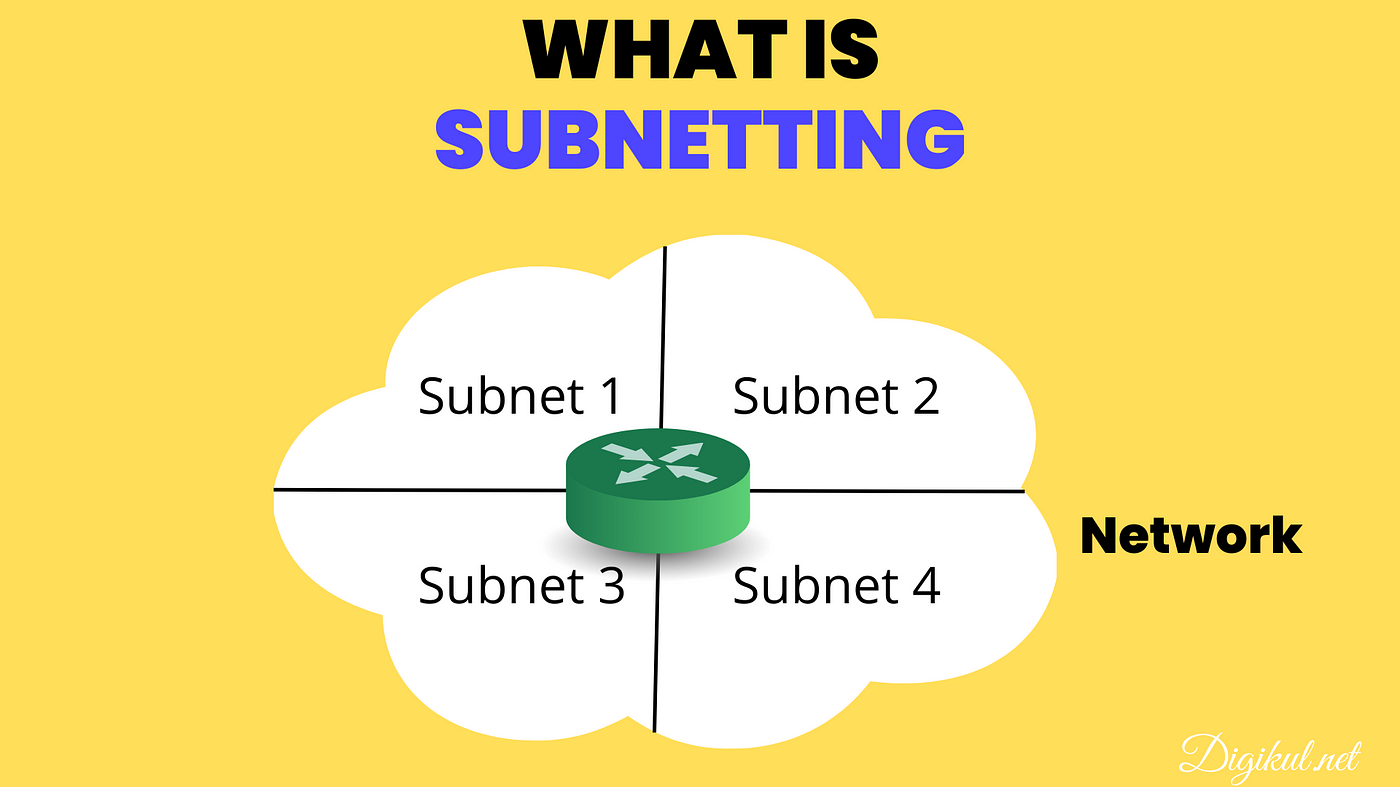What is Subnetting and its advantages and disadvantages?
Subnetting helps optimize the use of IP addresses. In today's digital age, when the demand for Internet connection is increasing, understanding subnetting will help network administrators set up, maintain and optimize their network systems more effectively. So what is Subnetting? Let's find out with TipsMake through the article below.
What is Subnetting?
Subnetting, also known as "network segmentation", is the process of dividing a large network into smaller subnets. Each subnet can be managed independently, allowing for easier and more efficient organization of data and network resources. This division not only improves scalability but also enhances the security of network protocols.
Subnetting is a method of dividing a network into subnets from a larger network. By using a subnet mask, a network administrator can define the boundaries between subnets and regulate how information is transmitted between them.
 What is Subnetting and its advantages and disadvantages? Picture 1
What is Subnetting and its advantages and disadvantages? Picture 1
How does subnetting work?
Subnetting is a multi-stage process, each of which plays a key role in establishing and maintaining an efficient network.
Step 1: Determine network requirements
First, you need to carefully analyze the actual needs of your network, including the number of subnets required and the expected number of devices (hosts) on each subnet.
Step 2: Select the appropriate subnet mask
Once you have determined your requirements, you need to choose an appropriate subnet mask. The subnet mask determines the number of bits used for the network portion and the host portion of the IP address. A subnet mask is often represented using CIDR notation.
Step 3: Calculate IP address range
Once you have chosen a subnet mask, you need to calculate the IP address range for each subnet. The first IP address in a subnet is usually used for the gateway, while the last IP address is usually reserved for broadcast. The remaining IP addresses will be distributed to devices on the network.
Step 4: Configure router and switch
Once you have the IP address range for each subnet, you need to configure your router and switches to ensure they can communicate with each other.
Why is Subnetting important and necessary?
Here are some reasons why subnetting is important.
- Enhanced security: By dividing a large network into multiple subnets, you can control traffic between subnets, prevent external intrusions, and limit the impact of internal threats.
- Optimize network performance: In addition to security, subnetting also helps optimize network performance. By dividing the network, traffic can be distributed more evenly and congestion can be reduced.
- Easier Resource Management: Network segmentation allows administrators to monitor, control, and allocate resources more efficiently. They can easily identify problems occurring in a particular subnet without affecting the entire network.
- Flexible Expansion: With the advancement of technology and the increasing demand for connectivity, network scalability is very important. Subnetting allows you to add new subnets as needed without affecting the structure of existing subnets.
Advantages and disadvantages of Subnetting
While subnetting offers many benefits, it also comes with some disadvantages that users and network administrators need to consider. Here is a detailed analysis of the pros and cons of subnetting.
Advantages of Subnetting
- Increased security and control: Separating the network into smaller subnets increases security. Traffic control becomes easier, preventing external attacks and controlling access between different groups of users.
- Save IP addresses: When you divide a large network into multiple subnets, you can use IP addresses more efficiently.
- Optimize network performance: Each subnet can operate independently, thereby improving the overall performance of the network. Devices within the same subnet can communicate quickly without going through complicated routers.
- Easy to manage and maintain: When you divide your network into subnets, management and maintenance become easier. Problems in a particular subnet can be identified and fixed without affecting other subnets.
Disadvantages of Subnetting
- Complexity in configuration: Without sufficient knowledge and experience, the subnet setup process can be difficult and error-prone.
- High investment costs: Adopting subnetting may require investment in new network equipment and management software. These costs may be a barrier for small organizations or startups. They may need to consider carefully before deciding to adopt this technology.
- Difficult to scale: Although subnetting provides flexible scalability, if not done properly, scaling can become a challenge.
- Complex Management: With the network divided into multiple subnets, management can become more complex. Network administrators need to monitor traffic between subnets and ensure that no problems occur.
Conclude
Subnetting offers many notable benefits such as enhanced security, optimized performance, and ease of management. However, it also comes with some disadvantages that organizations need to consider. Understanding subnetting will help network administrators not only improve system performance but also enhance the security of their network environment.
You should read it
- How to divide the subnets and the benefits of subnetting
- Free online subnet exercises
- What is a subnet mask?
- How to check MAC address on Linux
- Windows 11 offers new updates to help games run smoother
- This is why I stopped using Facebook and Twitter after 10 years of use
- Dental care can protect your child from obesity
- Instructions for restoring Yahoo Messenger account
- Photoshop CS: Cutting edges and creating frames (Last part)
- Apple postpones iPhone 5 launch
- 'Ultra-thin IdeaPad' laptop is available in Vietnam
- Working with the Domain Controller Diagnostic Utility - Part 3
May be interested

What is DAS? Concept and how Direct Attached Storage works

What is ACID? Learn about 4 important properties in databases

What is System Idle Process? How to Manage It Most Effectively

What is RPC Server is Unavailable Error? How to fix it effectively

What is Data Transfer? How does Data Transfer work?

What is Packet Loss? How to Fix and Prevent Packet Loss






 Advantages and disadvantages of dual boot (dual boot)
Advantages and disadvantages of dual boot (dual boot) How to divide the subnets and the benefits of subnetting
How to divide the subnets and the benefits of subnetting Free online subnet exercises
Free online subnet exercises What is VPN? Advantages and disadvantages of VPN virtual private network
What is VPN? Advantages and disadvantages of VPN virtual private network Advantages and disadvantages of the Internet
Advantages and disadvantages of the Internet What is HD-SDI camera? Outstanding advantages and disadvantages of HD-SDI camera
What is HD-SDI camera? Outstanding advantages and disadvantages of HD-SDI camera